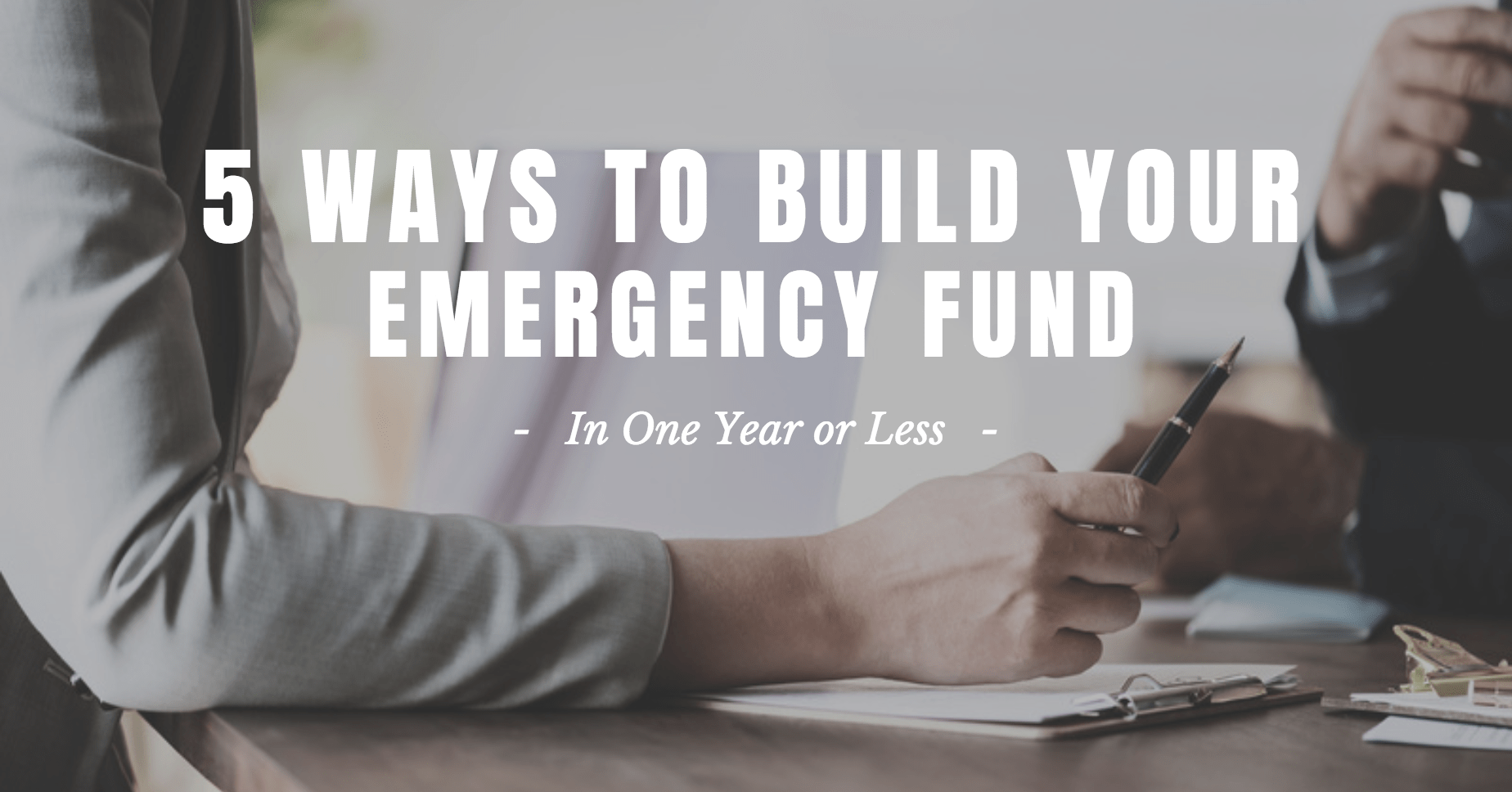
5 Ways To Build Your Emergency Fund
There’s great comfort in knowing you can weather the most common “financial emergencies” like a new transmission for your car, a trip to the emergency room and even the dreaded AC unit replacement. It’s important to have an emergency fund in place, but what’s considered a viable amount and how long does it take to build? Can it be done in a year or less? The short answer is with some work, yes.
First Things, First
Before rolling back your sleeves and building an emergency fund, make sure you address any outstanding credit card balances first. Dave Ramsey suggests setting aside $1,000 into your savings first to give some breathing room, then paying off credit cards so you can start building your full emergency fund.
Another potential misstep would be calling your emergency fund a zero balance credit card or HELOC (Home Equity Line of Credit). Many folks use this approach because they don’t want their savings earning close to zero interest. I don’t recommend this for two reasons. First, the last thing you want to do (if faced with a financial emergency) is to add fuel to the fire by adding debt. Second, you shouldn’t be overly concerned with growth or how much interest you’re earning with money you may need to spend within 36 months. You just need to know the money will not lose value and be accessible.
Establish the Right Amount
The tried-and-true way to establish an emergency fund is having three to six months of spendable income in place. For example, if you are paid bi-weekly, take your direct deposit amount and multiply it by 6 (3 months) or 12 (6 months) and that’s the target number to have in your emergency fund. I recommend closer to 6 months for an added sense of security – better to have it and not need it than to need it and not have it.
Here are five practical ways to build your emergency fund within a year. They can be used individually or combined with each other to establish your emergency fund.
1. Set Up An Allotment from Your Paycheck
If you’re paid in a regular frequency (bi-weekly or monthly), this is a simple and effective way to reach your savings goal. For example, let’s say you want $9,000 in your emergency fund in one year. If you’re paid bi-weekly, you have 26 pay periods every year: $9,000 / 26 = $346 allotment every paycheck.
This strategy requires two disciplines. The first is to set up your emergency fund at a financial institution other than the one you have your primary checking account. This removes the temptation – out of sight, out of mind. The second is to not overdo it. This plan will backfire if you get too ambitious and set up an allotment for an amount that is not sustainable. If you can’t hit your twelve month goal, then adjust the timeframe or implement other strategies.
2. Sell Your Stuff
This one is pretty self-explanatory, but it’s also easier said than done. It’s a challenge to let go of stuff we never use – we get sentimental or rationalize unlikely scenarios where something may come in handy. A good rule of thumb is if you haven’t used it in the last year, you are not likely to use it again. Earn some extra cash and sell your stuff to someone who needs it more.
3. Reduce Retirement Account Contributions (401(k) / TSP / IRA / 403(b) / 457)
This one tends to raise some eyebrows and cause controversy, but temporarily reducing your 401(k) or other retirement account contributions for the sake of building your emergency fund may be the right approach. Once the money enters into your retirement account, there could be penalties for accessing the funds should you get into a financial pinch. If you have a company match, you may want to consider contributing the minimum amount to receive the match. Prioritize the emergency fund first.
4. Tighten Up Your Budget
If you honestly track your spending for 30 days, you will likely find one or two spends that cause you to be a little upset with yourself. Commonly eating out is one of the usual suspects. Amazon is also a frequent offender. Look over what you’re spending and adjust accordingly – it’s that simple. I like to see what percentage each category of spending represents (insurance: 8%, eating out: 5%, mortgage: 25%, etc.). Give it a try, the results may surprise you.
5. Get a Side Job
I realize this strategy may not initially get you excited, but keep in mind this is a temporary means to an end. The good news is there are so many opportunities today to pick up a side job with flexible hours. Rideshare companies like Lyft and Uber are just one of many ways to generate some extra income with flexible hours. Get creative, and have fun with it.
When you hit your emergency fund goal, you can go back to your retirement account funding – ideally 15% or more. Don’t forget all the lessons learned from reviewing your budget and spending. Keep the unnecessary spending down. Should an emergency occur and you have to tap into your savings, you want to be well-prepared to replenish your emergency fund. Good luck!
If you’d like to discuss your emergency fund options with us, book a call using this link and we’ll be in contact with you shortly.




